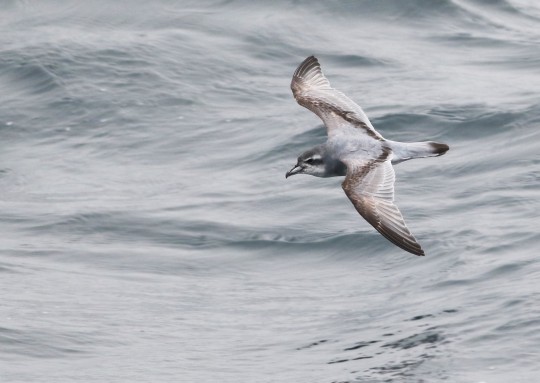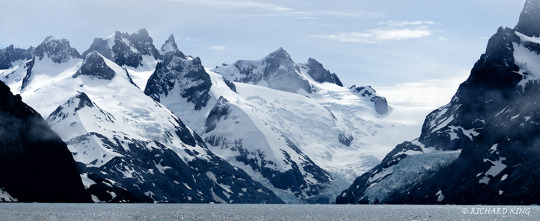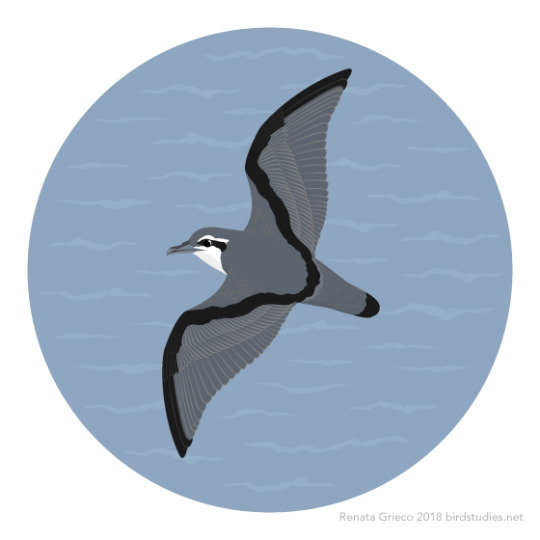#antarctic prion
Text

Antarctic prion and Gibson's albatross, Chris Burwell
174 notes
·
View notes
Text

[276/10,977] Antarctic Prion - Pachyptila desolata
Order: Procellariiformes (tubenoses)
Family: Procellariidae (petrels, prions and shearwaters)
Photo credit: Andrew Spencer via Macaulay Library
#birds#Antarctic Prion#Procellariiformes#Procellariidae#Pachyptila#birds a to z#undescribed#0% - 25%
11 notes
·
View notes
Text
Antarctica Dream Adventure 8 - Drygalski Fjord
This is our third day at South Georgia Island in our Antarctica Dream Adventure. South Georgia is the British Overseas Territory of South Georgia and the South Sandwich Islands.
As we progress on the expedition we are told that areas of South Georgia are being closed due to the detection of birds with avian influenza and to help reduce the spread of the disease. The expedition leader is…

View On WordPress
#Antarctica#SnowPetrel#SouthernFulmar#SouthGeorgia#wildlifephotography#Z100-400S#Z24-70S#Z8#Antarctic Prion#Antarctic Shag#Antarctica Dream Adventure#British Overseas Territory#Drygalski Fjord#Fjord#glaciers#Iceberg Alley#Icebergs#Mountains#NIK 6 Silver Efex#Nikkor 24-70mm f/4 S#Nikkor Z 100-400mm f/4.5-5.6 VR S#Nikkor Z TC-1.4x#Nikon Camera Systems#Nikon Z 8#Richard King Photography#Snow Petrels#South Georgia and the South Sandwich Islands#South Georgia Island#Southern Fulmar
0 notes
Photo










More birds. First five are prions, tiny seeabirds that skim the waves and are very hard to identify. I think I identified three species on the trip and these ones are Slender-billed and Antarctic Prions. Pics of the Fairy Prion are pretty poor. Next is a Southern Fulmar and a Snowy Sheathbill. Then there are two Turkey Vultures - hunting on Saunders Island and hiding from the blizzard in Stanley. The last one is a Wandering Albatross, sadly wandering no more, in the Grytviken Museum. It looks big, but we saw some quite a bit bigger. Magnificent birds!
0 notes
Photo

September 18, 2018 - Antarctic Prion, Totorore, Dove Prion, or Whalebird (Pachyptila desolata)
Breeding on islands in the southern oceans, including the Crozet, Auckland, and South Sandwich islands, among others, these prions can be seen as far north as Peru. Foraging in flocks of thousands, they eat small crustaceans, squid, fish, and gastropods, capturing their prey near the water’s surface while running, flying, swimming, or diving. Monogamous pairs breed in large colonies, nesting in burrows or crevices in rocks. Both parents incubate the single egg and feed the chick.
67 notes
·
View notes
Video
Antarctic Prion (Pachyptila desolata) in flight off South Georgia. by Lex
6 notes
·
View notes
Text
i may have several outsized fears proportional to likelihood but they're all eminently sensible things to be very, very afraid of, like prion diseases, & being shipwrecked on the open ocean, or having to do surgery on myself without anesthesia in a highly improbable extreme wilderness survival situation like that russian guy at the remote antarctic research station who had to perform his own emergency appendectomy...also rabies
8 notes
·
View notes
Text
Quarentine blog day 211
The Southern ocean
Deep in the oceans
Where even mariners fear to sail
Bands of latitude-foul and infamous
Reside where land is scarce.
The Roaring forties
And the Screaming sixties
Whipped by the Antarctic current
Here is where winds come howling
From the very ends of the earth
To be gathered in this one place
And unleashed with unending fury.
Here waves tower like mountains
Unimpeded, they roll on
Until smashed against some speck of land
Or an unlucky ship.
But here in this perpetual maelstrom
Life finds a way
In waters churned and choppy
Travel the great whales
With them come seals
And great swarms of krill.
In the skies above
Birds dart and dance
Among towering swells.
Prions and petrels
But most majestic of all
Is the albatross which soars
On great wings
Where storm, sea and sky meet
At the end of the world.
1 note
·
View note
Text


Doing another redraw of my old art, this time of a character I made when I was 15 for Tokyo Mew Mew.
Her name was Azura. Her animal was a white bellied sea eagle, even though they're not endangered like the whole premise of the other girl's animal transformations? Dunno why I picked that, other than I wanted her to be an eagle and I thought they were ~cool~
If I picked an animal for her now I'd probably make her a tristan albatross, an antarctic tern or a fairy prion, since they're all endangered Australian seabirds (I had kinda an ocean theme going with her. Also stars, I think because of my LotRs elves obsession at the time).
Her magic weapon was a sword. Of course.
#tokyo mew mew#mew mew power#also her team was the Sydney mew mews lol#I know I have the rest of them somewhere#one was a przewalski's horse
14 notes
·
View notes
Photo

Antarctic Prions flit around the ship on our way to the ice. These delicate little birds have a wingspan of about 18 inches and look tiny from the deck. Being the same color as the water, with the black M across its back and white wings, they blend in well with the chop of the ocean and are really hard to spot from ship, much less get a clear shot as these little fuckers are fast and tiny! I snapped off about 100 shots to get this one. #80Days #beardedhomo #midlifegapyear https://www.instagram.com/p/B88VVsuh39z/?igshid=11rl3rim3yoyf
0 notes
Photo

On This Fantastic Antarctic Local
The Wandering Albatross is one of the giants of the avian world. A truly majestic bird to witness in flight, a sighting can certainly be an incredible part of your Antarctic expedition cruise. Should you be lucky to see a nesting site, you will be one of the privileged few! These incredible animals can fly on fishing trips for 14 – 20 days and use as much energy as sitting on a nest, now, that is impressive! Here are some more facts on this fantastic Antarctic local.
The Wandering Albatross can have a wingspan of up to 3.5m which is the largest of any bird. They also can measure over 1m in length making it one of the largest birds in the world.
Albatrosses pairs generally breed every two years producing one chick, and mate for life. December – January is when eggs are laid, and hatching usually occurs at around 11 weeks after the eggs are laid. Juvenile birds can weigh up to twelve kilograms! This can lead to a few issues when learning to fly, and their clumsy attempts have been captured on a few amusing YouTube videos.
Wandering Albatrosses can cover huge distances of many thousand kilometres on a feeding journey. They have been known to cover 1000km for breakfast! One bird was tracked around Antarctica for a flight of 46 days. 950km per day and an average speed of over 40 kilometres per hour!
Albatrosses don’t actually “flap” their wings. They have a locking mechanism in their wing which allows it to hold its position for the duration of long flights. When flying they use a technique which is known as “dynamic soaring” that allow them to use the winds energy to sustain their long-distance journeys around the Antarctic.
The estimated world population is 26,000 birds – Their habitat is under threat on some sub-Antarctic islands due to rodent infestations – although in South Georgia there has been some recent success (link) in eradicating rats from the Island. Longline fishing is also an ongoing threat to the species.
In Maritime lore, Albatrosses carry the soul of dead sailors, and for an Albatross to die on-board a ship it was deemed as very bad luck (for the ship, not just the bird!).
Wandering Albatrosses are best seen on Prion Island, a 2.4km long island off the coast of South Georgia. Some Antarctic cruises actually stop here either early in the season (October) or Late (March onwards). This is due to the sensitivity of the Islands. Very limited visitors (around 200) are allowed here each year, so if Albatrosses are your thing – then it’s a must-see. Over the past few years, Prion Island has had some elevated boardwalks installed so that visitors do not interfere with the breeding and nesting birds.
When breeding, Wandering Albatrosses take part in a ritual known as “Sky calling” where the birds spread their immense wings and vocalise upwards, the dance can last many minutes and can be done each time they breed.
A journey to the Antarctic Peninsula isn’t complete without seeing at least one of these majestic birds tailing in the wake of your ship, on the lookout for fish in the churned-up waters. Albatrosses are solitary animals when in flight and we find the best place to spot them is generally at the stern of your ship, whilst crossing the Drake Passage.
Thanks to Santiago de la Vega for helping to compile this information. Santiago was our resident Ornithologist on-board Chimu Adventures “Shackleton Discovery” and “PinKtarctica” voyages aboard the Sea Adventurer. Argentinean by birth, Santiago holds a master’s degree in Biology from the University of Buenos Aires and has been guiding bird trips in the Antarctic as well as Argentina and Chile for the past sixteen years.
0 notes
Photo

On This Fantastic Antarctic Local
The Wandering Albatross is one of the giants of the avian world. A truly majestic bird to witness in flight, a sighting can certainly be an incredible part of your Antarctic expedition cruise. Should you be lucky to see a nesting site, you will be one of the privileged few! These incredible animals can fly on fishing trips for 14 – 20 days and use as much energy as sitting on a nest, now, that is impressive! Here are some more facts on this fantastic Antarctic local.
The Wandering Albatross can have a wingspan of up to 3.5m which is the largest of any bird. They also can measure over 1m in length making it one of the largest birds in the world.
Albatrosses pairs generally breed every two years producing one chick, and mate for life. December – January is when eggs are laid, and hatching usually occurs at around 11 weeks after the eggs are laid. Juvenile birds can weigh up to twelve kilograms! This can lead to a few issues when learning to fly, and their clumsy attempts have been captured on a few amusing YouTube videos.
Wandering Albatrosses can cover huge distances of many thousand kilometres on a feeding journey. They have been known to cover 1000km for breakfast! One bird was tracked around Antarctica for a flight of 46 days. 950km per day and an average speed of over 40 kilometres per hour!
Albatrosses don’t actually “flap” their wings. They have a locking mechanism in their wing which allows it to hold its position for the duration of long flights. When flying they use a technique which is known as “dynamic soaring” that allow them to use the winds energy to sustain their long-distance journeys around the Antarctic.
The estimated world population is 26,000 birds – Their habitat is under threat on some sub-Antarctic islands due to rodent infestations – although in South Georgia there has been some recent success (link) in eradicating rats from the Island. Longline fishing is also an ongoing threat to the species.
In Maritime lore, Albatrosses carry the soul of dead sailors, and for an Albatross to die on-board a ship it was deemed as very bad luck (for the ship, not just the bird!).
Wandering Albatrosses are best seen on Prion Island, a 2.4km long island off the coast of South Georgia. Some Antarctic cruises actually stop here either early in the season (October) or Late (March onwards). This is due to the sensitivity of the Islands. Very limited visitors (around 200) are allowed here each year, so if Albatrosses are your thing – then it’s a must-see. Over the past few years, Prion Island has had some elevated boardwalks installed so that visitors do not interfere with the breeding and nesting birds.
When breeding, Wandering Albatrosses take part in a ritual known as “Sky calling” where the birds spread their immense wings and vocalise upwards, the dance can last many minutes and can be done each time they breed.
A journey to the Antarctic Peninsula isn’t complete without seeing at least one of these majestic birds tailing in the wake of your ship, on the lookout for fish in the churned-up waters. Albatrosses are solitary animals when in flight and we find the best place to spot them is generally at the stern of your ship, whilst crossing the Drake Passage.
Thanks to Santiago de la Vega for helping to compile this information. Santiago was our resident Ornithologist on-board Chimu Adventures “Shackleton Discovery” and “PinKtarctica” voyages aboard the Sea Adventurer. Argentinean by birth, Santiago holds a master’s degree in Biology from the University of Buenos Aires and has been guiding bird trips in the Antarctic as well as Argentina and Chile for the past sixteen years.
0 notes
Text

[275/10,977] Antarctic Petrel - Thalassoica antarctica
Order: Procellariiformes (tubenoses)
Family: Procellariidae (petrels, prions and shearwaters)
Photo credit: Brian Sullivan via Macaulay Library
#birds#Antarctic Petrel#Procellariiformes#Procellariidae#Thalassoica#birds a to z#undescribed#0% - 25%
9 notes
·
View notes
Text
Antarctica Dream Adventure 05 - Birds and Bergs en route to South Georgia Island

View On WordPress
#(Arctocephalus pusillus)#(Daption capense)#(Fulmarus glacialoides)#(Macronectes giganteus)#(Megaptera novaeangliae)#(Pachyptila desolata)#(Phoebetria palpebrata)#(Pterodroma macroptera)#(Thalassarche chrysostoma)#(Thalassarche melnophris)#Antarctic Prion#Antarctica Dream Adventure#Bird Mode#birds#Black-browed Albatross#Cape Petrel#Fur Seals#Giant Petrel#Great-winged Petrel#Grey-heded Albatross#Humpback Whale#Icebergs#Light-mantled Albatross#marine mammals#South Atlantic Ocean#South Georgia Island#South Georgia Island and Antarctica Expedition#Southern Fulmar#Viking Octantis
0 notes
Photo

On This Fantastic Antarctic Local
The Wandering Albatross is one of the giants of the avian world. A truly majestic bird to witness in flight, a sighting can certainly be an incredible part of your Antarctic expedition cruise. Should you be lucky to see a nesting site, you will be one of the privileged few! These incredible animals can fly on fishing trips for 14 – 20 days and use as much energy as sitting on a nest, now, that is impressive! Here are some more facts on this fantastic Antarctic local.
The Wandering Albatross can have a wingspan of up to 3.5m which is the largest of any bird. They also can measure over 1m in length making it one of the largest birds in the world.
Albatrosses pairs generally breed every two years producing one chick, and mate for life. December – January is when eggs are laid, and hatching usually occurs at around 11 weeks after the eggs are laid. Juvenile birds can weigh up to twelve kilograms! This can lead to a few issues when learning to fly, and their clumsy attempts have been captured on a few amusing YouTube videos.
Wandering Albatrosses can cover huge distances of many thousand kilometres on a feeding journey. They have been known to cover 1000km for breakfast! One bird was tracked around Antarctica for a flight of 46 days. 950km per day and an average speed of over 40 kilometres per hour!
Albatrosses don’t actually “flap” their wings. They have a locking mechanism in their wing which allows it to hold its position for the duration of long flights. When flying they use a technique which is known as “dynamic soaring” that allow them to use the winds energy to sustain their long-distance journeys around the Antarctic.
The estimated world population is 26,000 birds – Their habitat is under threat on some sub-Antarctic islands due to rodent infestations – although in South Georgia there has been some recent success (link) in eradicating rats from the Island. Longline fishing is also an ongoing threat to the species.
In Maritime lore, Albatrosses carry the soul of dead sailors, and for an Albatross to die on-board a ship it was deemed as very bad luck (for the ship, not just the bird!).
Wandering Albatrosses are best seen on Prion Island, a 2.4km long island off the coast of South Georgia. Some Antarctic cruises actually stop here either early in the season (October) or Late (March onwards). This is due to the sensitivity of the Islands. Very limited visitors (around 200) are allowed here each year, so if Albatrosses are your thing – then it’s a must-see. Over the past few years, Prion Island has had some elevated boardwalks installed so that visitors do not interfere with the breeding and nesting birds.
When breeding, Wandering Albatrosses take part in a ritual known as “Sky calling” where the birds spread their immense wings and vocalise upwards, the dance can last many minutes and can be done each time they breed.
A journey to the Antarctic Peninsula isn’t complete without seeing at least one of these majestic birds tailing in the wake of your ship, on the lookout for fish in the churned-up waters. Albatrosses are solitary animals when in flight and we find the best place to spot them is generally at the stern of your ship, whilst crossing the Drake Passage.
Thanks to Santiago de la Vega for helping to compile this information. Santiago was our resident Ornithologist on-board Chimu Adventures “Shackleton Discovery” and “PinKtarctica” voyages aboard the Sea Adventurer. Argentinean by birth, Santiago holds a master’s degree in Biology from the University of Buenos Aires and has been guiding bird trips in the Antarctic as well as Argentina and Chile for the past sixteen years.
0 notes
Photo

January 8, 2019 - Blue Petrel (Halobaena caerulea)
Breeding on several islands off of southern Chile and Antarctica, these petrels are found in antarctic and subantarctic seas. Their diet consists of crustaceans, small fish, and squid, which they catch in flight or while swimming or diving. They are often found in single-species flocks, but will also join mixed-species flocks with prions. Breeding in colonies, they lay a single egg in a burrow nest. Both parents incubate the egg and feed the chick.
83 notes
·
View notes
